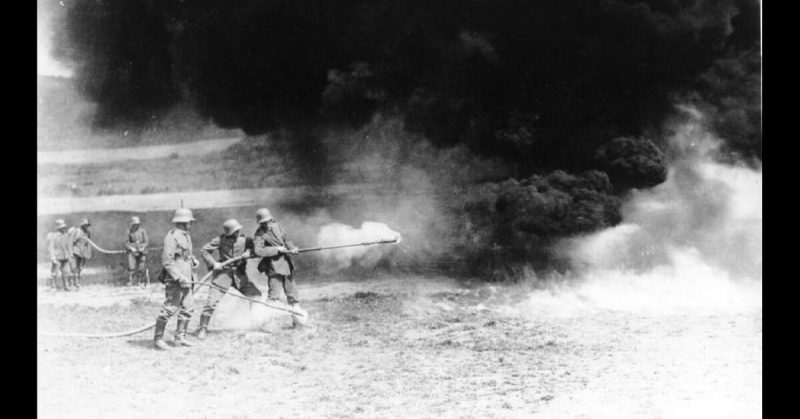The First World War saw a huge increase in new and groundbreaking technology, on both sides of the conflict. Every faction involved wanted to develop war machines and weapons that might give them an edge, turning the tide in their favor. Machine guns, submarines, and tanks are just a few of the breakthroughs that occurred during this time.
One particularly deadly innovation, however, was the introduction of the flame thrower. Although it wouldn’t become a wide-spread feature of warfare until the Second World War, the Germany military actually started equipping their men with these new weapons as far back as 1911.
Known to the Germans as the Flammenwerfer, the early flame throwers first appeared briefly in combat early in 1915, near Verdun. However, later that year, they were put to proper use at Hooge, where German soldiers turned their new weapons on the British troops stationed there.
Even when the flames themselves failed to kill Allied fighters, the Flammenwerfer could still force them to leave the cover of their trenches, at which point they could be picked off by German gunmen.
Although British forces attempted to produce their own fire-based weapons, the Allies were not particularly successful in developing an equivalent to this new German weapon. By 1939, of course, both the Axis and Allied armies were capable of deploying portable flame-throwers, but during the First World War, this technology remained the domain of the German military.
In this video, as part of the on-going series The Great War, Indy Neidell breaks down the events of February 1915, when the first German flame throwers were put to use on the Western Front. The YouTube channel behind this video produces weekly updates on the progression of the First World War, covering events in real-time, as well as exploring individual weapons, events and people involved.
For anyone with an interest in early 20th-century warfare, The Great War is a truly fascinating series.
https://www.youtube.com/watch?v=RvRbhOA6lY0
